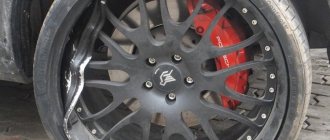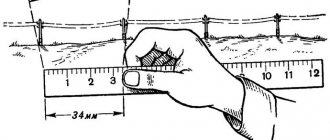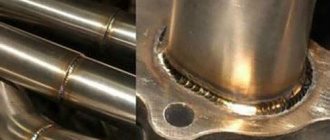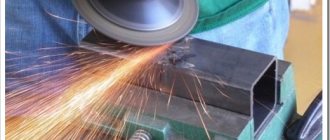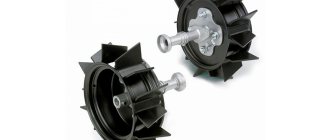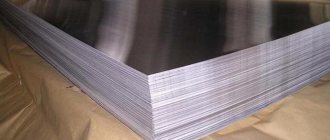Car enthusiasts are well aware that welding of alloy wheels due to their high strength (or “indestructibility”) is extremely rarely in demand. Despite this, quite often one comes across offers and advertisements related to this type of work, which is explained by the well-known features of our roads. Wheel rims are most often used in conditions far from the design ones, so even such a durable structure cannot withstand the loads and receives damage that requires repair. The most common type of such damage is the appearance of cracks and chips, which can only be eliminated by welding the disks, which is a professional repair method.
Repair and welding of car wheels
The most common problem that motorists face is cracks. Chips are possible, they require more attention, since in fact the disk has to be assembled from two parts, making sure that its geometry is not disturbed.
Discs without defects
When repairing cracks and chips, preparation is first made:
- Contaminants in the repair area are removed.
- The paint is peeled off at a distance of 1 cm from the damage site.
- A cut is made along the crack - the so-called “opening”, which helps to level the metal in the area of the defect and, as a result, will provide a better result.
For your information!
A longitudinal crack cuts through, a transverse crack only widens. It is better to cut out metal in this place with a small margin, since there may be a small hidden continuation of the crack in the depths.
Another option would be to drill where the crack ends and cut from the outer edge to where you drill.
The sequence of actions when repairing and welding a car wheel is as follows:
Disk repair
- After removing the tire, you need to carefully inspect everything, marking all the chips and cracks (some may be very small).
- Clean the coating down to bare metal around the work area.
- Using a grinder or other tool, cut through the crack areas.
- Clean and degrease the area of the future weld.
- Carry out welding using filler wire and argon arc welding.
- After the weld has cooled, grind it flush with the surface.
The procedure for carrying out repair work
To correct damage to alloy wheels, it is necessary to involve specialists who repair them. In addition, specialized equipment and tools will be in demand. So, you can only restore the protective coating with your own hands.
In the repair shop, approximately the following list of work will be done.
Preparation - any disk must undergo an inspection before starting work. To perform this operation, it must be cleaned of dirt and only then will all damage become noticeable.
If cracks are detected, the disc will have to be sent for welding. Welding of cast wheels is performed using equipment that allows work to be performed under the protection of inert gases. To repair discs made of aluminum, electrodes of the AG brand are used; for discs made of magnesium alloys, it is necessary to use electrodes of the AMG brand.
After all the cracks have been welded, the surface of the disk must be cleaned of welding marks. If necessary, special equipment must be used.
After cleaning the disk, its geometric parameters are checked. To do this, the finished disk is installed in a special cartridge. To restore geometric parameters, a hydraulic cylinder equipped with special attachments is used. In this way, beats and, of course, geometric parameters are eliminated.
After the defects have been eliminated, the disc will be sanded, degreased and sent for painting. Coatings that are based on epoxy resin are often used for coating.
The very last operation is balancing.
Proper welding of discs with argon
Argon welding
The alloy grade of the disk and the filler wire or electrode rod must be the same. The manufacturer places a mark on the outside indicating the composition of the material. The most common alloys are silicon or magnesium.
Important!
It is necessary to select the correct filler wire diameter based on the thickness of the welded area. For welding, the additive 4043, silicon or magnesium, is most often used.
Before welding itself, you need to prepare, clean and degrease (using acetone) the surfaces to be welded.
Required equipment and materials:
- Bulgarian;
- argon arc welding machine;
- electrodes, meltable or non-meltable;
- filler wire, if a consumable electrode is used;
- protective equipment for welder.
After welding the crack, it is necessary to remove excess metal so that the balancing of the disk is not disturbed.
Types of damage
Chips and cracks may appear on alloy wheels.
Repairing these damages in specialized workshops will significantly impact your wallet. The price is based mainly not on the complexity of the work performed, but on the fact that the market for such services is not wide. But doing the repair yourself will be much cheaper. You should know that argon welding is used to eliminate these damages. When welding with argon, unlike conventional welding, the electrode is not inserted into the holder. It must be brought into the flame of an argon burner. The process is very similar to soldering rather than welding:
- The surfaces being welded heat up.
- Molten metal is poured between them.
This is a general description of welding. There are no difficulties in this process. Therefore, anyone who has experience in welding will be able to cope with this task. To carry out this work you will need the following tools:
- Protective mask and other protective equipment.
- Special electrodes (their composition must match the material from which the cast disk is made. The composition of the disk can be determined by the markings).
- Argon welding machine.
- Bulgarian.
Why is it important to properly weld the disk with argon?
Welded crack
Welding of cast wheels is now a fairly popular service, so many installers offer it without having sufficient skills or “learning in the era of enlightenment.” Such cases are not uncommon, and an aluminum wheel can be “highly and quickly, in 5 minutes” repaired on the side of the road near the highway. When choosing, it is necessary to focus on such companies with experience as, for example, RLD-groups.
While the car is moving, the disk on the axle rotates at high speed and experiences considerable loads. The quality of the weld seams and the preliminary preparation of the additive before welding are important.
Poor quality filling of the welded cavity with filler material may occur. In the cavity, at the border of contact between the disk and the weld, cavities can appear, places where the metal is poorly connected, which can collapse if there is a change in temperature or a physical shock (falling into a hole, overcoming a speed bump at high speed).
The welding of discs with light alloy wire should be carried out after the correct preparation procedure and in compliance with the technology. Simply placing a weld over an existing crack is completely unacceptable.
The procedure for performing welding work
Modes when performing welding work.
So, you have prepared the surfaces, have some experience with argon welding and can get to work. Initially, the welding site is heated with a torch. We make sure that the metal does not overheat. When a certain color appears (depending on the material of the product), an electrode is brought to the seam. If all the rules are followed, the metal from the electrode will quickly melt and fill the seam.
If you are welding a chip on a wheel rim, it is advisable to “grab” it along the edges to give the patch its final position, and then you can weld along the entire length of the fracture. When welding correctly, the seam should be visible on both sides (the molten metal should fill the entire space and enter the structural metal lattice of the disk).
If the thickness of the disk is large, then it is better to carry out welding in several stages on both sides, placing the seams on top of each other. It will be much more reliable. After the disc has completely cooled (remission), the seam must be sanded and prepared for painting. And here the same grinder with a sharpening and grinding attachment will help you. After surface treatment, the restored cast disc is ready for use.
Technology
As soon as all the preparatory manipulations are completed, you need to get to work, and you will have to act quickly before the effect disappears. The place designated for welding is heated with a torch. The change in color of the heated metal depends on its composition, and this point must be known in advance. As soon as the required heating is achieved, the filler material is immediately applied. The slightest delay is unacceptable!
They begin to apply the patch to the chip, grabbing it lightly. This will significantly improve the quality of grip. On thick disks, welding is carried out in stages, with the seams carefully placed one above the other. This requirement guarantees the reliability and long service life of the prepared connection.
As soon as the work is completed and the metal has cooled, you need to clean the weld seam using an angle grinder and prepare it for painting.
The initial heating of the metal should occur to 200 - 250 degrees. If this is not done or the temperature is increased above the required level, welding can only increase the deformation of the disk. Please note: instead of a gas burner, cutters of the RZP-300 model are sometimes used in oxygen-free operation. They start with a circular passage throughout the entire structure, and then heat the required area. In both cases, individual points cannot be heated; oscillatory movements must be made in a circle.
For welding itself, professionals often recommend model WL-15 electrodes with a golden color. The diameter of the tool can be 0.24 or 0.3 cm. The filler rods must be identical in composition to the materials of the disks themselves. Their diameter normally coincides with the cross-section of the electrode or is close to it. Important: it is better to deposit a little more metal than necessary and then remove it with a grinder than to make a poor-quality seam.
Aluminum alloys can be welded with fusible electrodes of the OK 96.50 modification. In this case, the affected area is heated with a burner or blowtorch to 300 degrees. To improve the ignition of the electrode, it is heated to 150 degrees. The patches are grabbed at the ends and only after that they work with the main length.
Deep cracks must be repaired from the inside, allowing the welding melt to escape.
You can find out how to weld a cast disk with argon below.
Surface preparation
Argon welding of cast wheels begins with surface preparation. If you only need to weld the crack, then you will have to widen it somewhat and remove paint from the surface of the cast disk to a distance of at least 1 cm from the crack on both sides.
If the disk has a chip (and this happens more often than a crack), then you will have to work on the disk itself and the piece that you would like to weld. It will work out well if it is part of the disk itself. In the case of using a “donor” part from another disk, it is recommended to double-check the compositions of the surfaces being welded.
